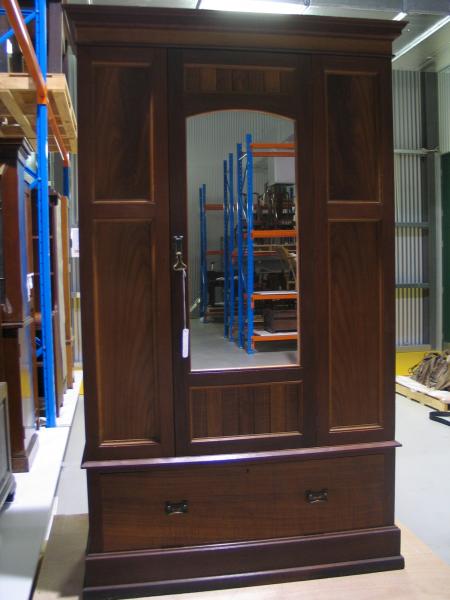LITTLE HOMEMAKER GAME
H1989.396
This is a game of setting up furniture in a kitchen / house. See also H89/385a for more furniture, including two chairs identical to those illustrated on the lid of this game. This number also contains household items such as a toaster, saucepans and another standard lamp like the one with this game. a. The insides of the box have similar drawings of the inside wall of a kitchen. There is a strip of black lino along the bottom of the wall, then tiles, then another thin black strip, possibly lino at halfway height.Above this the wall appears to have been painted aqua blue. There are two lines to indicate a cornice at the top of the wall. In the middle of the wall is a large window, with a flowering plant in a pot on the sill. Venetian blinds are half drawn and There is a scalloped edging along the top. There are plain cupboards on each was with plain long handles. A clock is on the wall. The centre of this is the same colour as the wall and the outside edge is scalloped like a flower. The time shown is five minutes past two. The picture inside the base is identical except that it has more cupboards, no clock, three flowering tubs on the windowsill and it is drawn around the base and up the edges rather than just on the base. On the right hand edge is a plain door. The top of the lid shows five pictures of the kitchen set up. Apart from the name of the game it states 'MODERN PLASTIC KITCHENS IN MINIATURE / EDUCATIONAL . WASHABLE . DURABLE' Inside the box is a piece of cardboard used to hold the furniture in place in the box. b. The plastic furniture, including seven plastic dolls. There is a television in a cabinet with large speaker underneath, and television written across the front. There is a table on a centre pedestal, four red chairs, two blue (all the same design). One dresser, one corner cupboard, one lounge chair with side wings, fabric covering quilted on the seat and draped around the bottom. One high reading lamp, small coffee table. One sideboard with large drawers in the centre and smaller ones on each side. One dressing table, with three drawers down each side and one in the centre, and a mirror above. Two high chests of drawers. Two bedside tables with a drawer and a cupboard, and a lamp to go on top. The dolls are identical, roughly made in moulded plastic. They are babies. They are sitting down and fit into the various chairs. The dolls are naked and have a rough spot on the top of their heads where the plastic was poured into the mould. The toys were used by Miss Frances Rogers. Miss Rogers, born on 19 Oct 1904, went to Teacher's College in 1930 and joined the Education Department of W.A. in 1934. Between 1934 and her retirement in 1967, she taught at various country schools, took special classes for deaf and dumb children in Mosman Park, and classes for mentally and physically disabled children in Leederville. She also made and purchased a large collection of puppets which were used as teaching aids. These are accessioned under numbers H88/613 to H89/307 (not inclusive).
Department:
History DepartmentCollection
| Accession Number: | H1989.396 |
|---|---|
| Accession Date: | 19 May 1989 |
Material
| Cardboard/Paper | Cardboard, plastic. |
|---|
| Plastic/Synthetic/Polymer |
|---|
Measurement
| length | 350mm |
|---|
| width | 260mm | b. |
|---|
| height | 60mm |
|---|
| length | 20mm |
|---|
| width | 20mm | (approx.) |
|---|
| height | 40mm |
|---|
The WA Museum is in the process of digitising its collections. This record may not have been reviewed by curatorial staff and may be inaccurate or incomplete. Research departments are continually working on these collections by adding new objects and reviewing existing content when new information is made available.
Enquiries can be emailed to reception@museum.wa.gov.au
Cite this page
Western Australian Museum Collections https://museum.wa.gov.au/online-collections/content/H1989.396
Accessed 5 Sep 2023
Rights
We support the open release of data and information about our collections.
Text content on this page is licensed under a Creative Commons Attribution 4.0 International License.
Image content on this page is copyright WA Museum.




